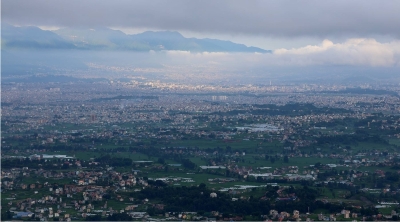CREDOS : Ganesh the pilot — II
J J Gordon
Ashtavinayaka Yatra is Sanskrit for “Eight Vinayaka (Ganesha) Pilgrimage.” It consists of visiting eight temples surrounding Pune, in western India, not far from Mumbai. Even with a car, it requires two or three days of gruelling travel over about 1,000 km to reach the eight villages of Morgaon, Siddhatek, Theur, Lenyadri, Ozar, Ranjangoan, Mahad and Pali. All of the icons at these temples — except one — are swayambhu, or “self-emanating,” murti (statue). That is, these murtis were all discovered naturally in the form of Ganesha and were not the product of a sculptor’s work. It is a difficult pilgrimage but, beyond the normal hazards of local traffic, lacks the dangers of high Himalayan ventures.
In December 2000, my wife and I set off at 7:00 am from Pune. This Maharashtran city is centrally located to all the eight temples, and is one of the launching points for the pilgrimage.
As with the famed six-temple pilgrimage for Lord Murugan in South India, there is a traditional order, though few follow it, as it means backtracking. We did as most pilgrims do, and after three hours of rough roads arrived at Sri Oreshwar, which is the first temple of the traditional order. It is considered the holiest and most awakened of the Ashtavinayaka temples. The swayambhu murti is lovely, in a sitting posture, facing east with a trunk turning left. Diamonds have been embedded in its eyes and navel. As with all the deities of this pilgrimage, it is covered in a thick coating of sandalwood paste which is re-applied several times a day. This builds up over time and then cracks open every century or so — reportedly last in 1788 and 1872 — revealing the smaller swayambhu murti underneath. — Beliefnet.com





